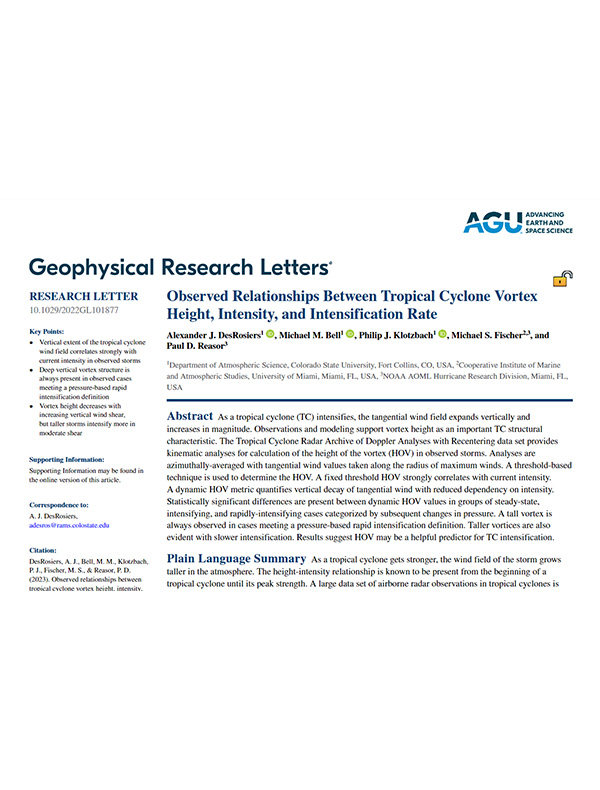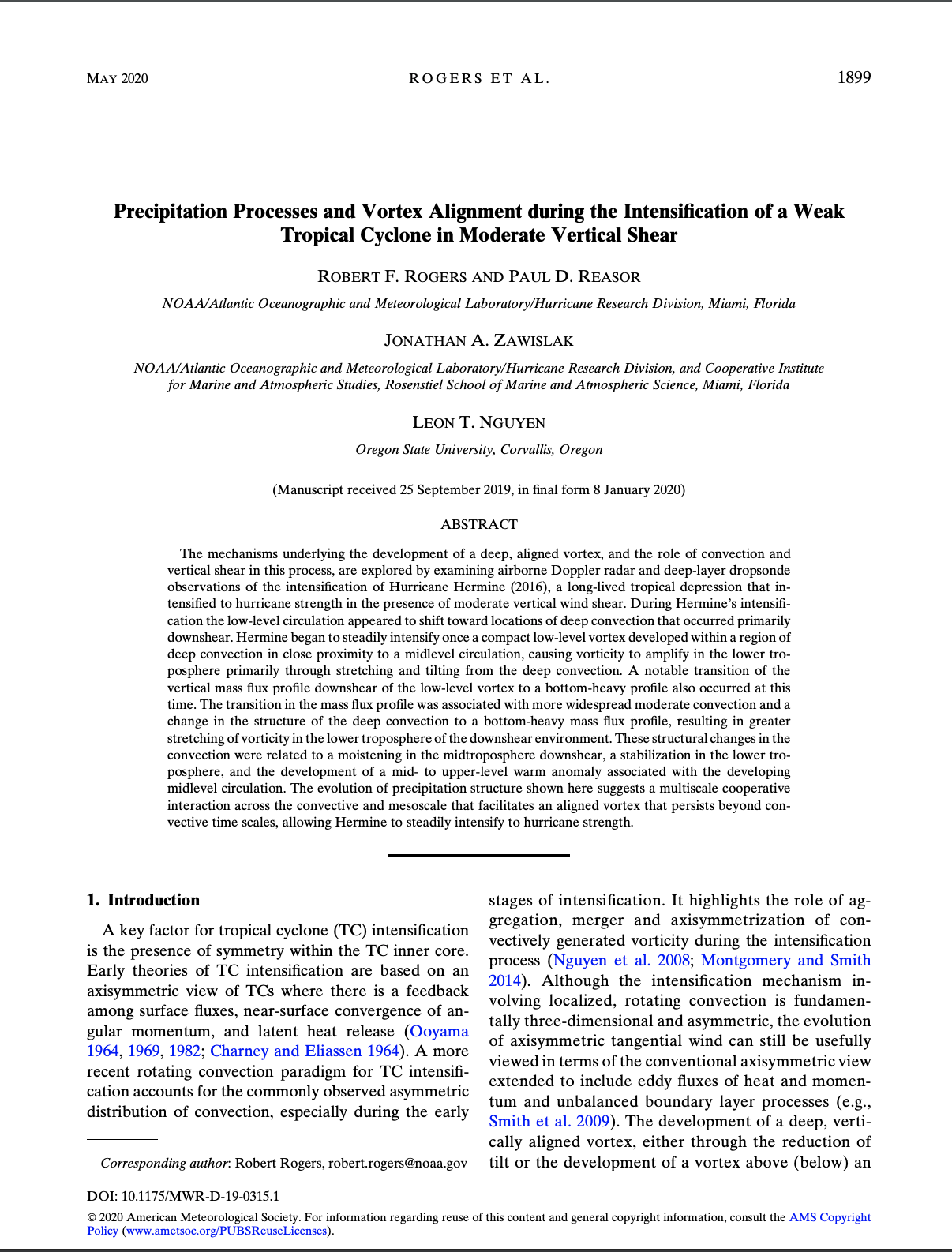Observed Relationships Between Tropical Cyclone Vortex Height, Intensity, and Intensification Rate
DesRosiers, A. J., Bell, M. M., Klotzbach, P. J., Fischer, M. S., & Reasor, P. D. (2023). Observed relationships between tropical cyclone vortex height, intensity, and intensification rate. Geophysical Research Letters, 50(8), e2022GL101877.
Abstract: As a tropical cyclone (TC) intensifies, the tangential wind field expands vertically and increases in magnitude. Observations and modeling support vortex height as an important TC structural characteristic. The Tropical Cyclone Radar Archive of Doppler Analyses with Recentering data set provides kinematic analyses for calculation of the height of the vortex (HOV) in observed storms. Analyses are azimuthally-averaged with tangential wind values taken along the radius of maximum winds. A threshold-based technique is used to determine the HOV. A fixed threshold HOV strongly correlates with current intensity. A dynamic HOV metric quantifies vertical decay of tangential wind with reduced dependency on intensity. Statistically significant differences are present between dynamic HOV values in groups of steady-state, intensifying, and rapidly-intensifying cases categorized by subsequent changes in pressure.



